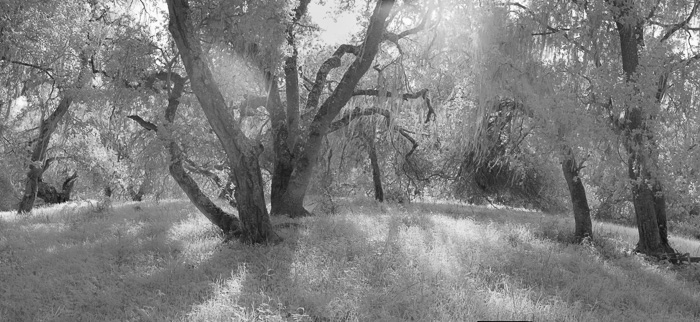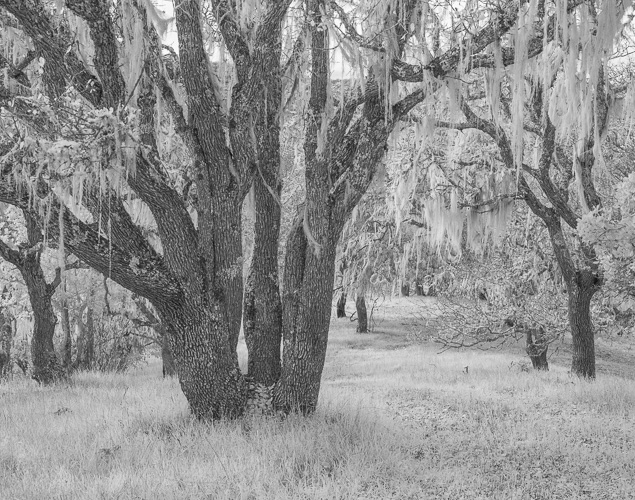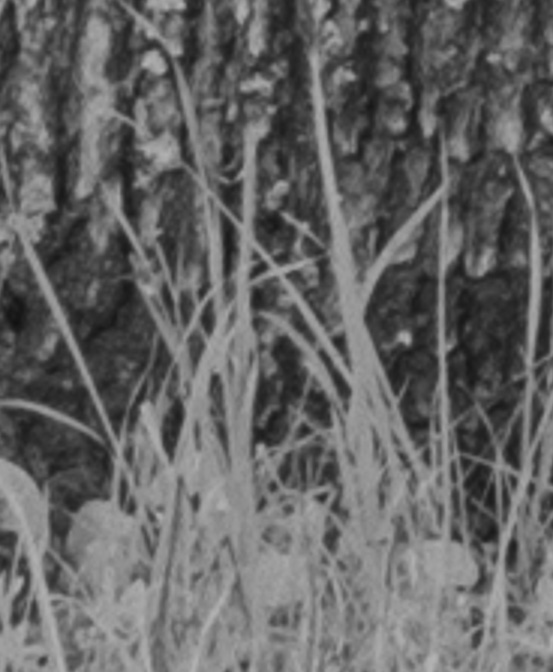Yesterday I went for a walk near my house with the LifePixel-modified alpha 7 and the Coastal Optical 60mm f/4 lens. No tripod.
As an informal flare test, I shot into the sun:
The above image is a ten-exposure stitch, with the camera held in portrait orientation, and a single row. I consider this exemplary flare performance. A lot of what looks to be flare was from moisture in the air.
A few days ago, a reader asked me about how the CO 60mm performed at f/4 and f/5.6. I will get to that in a few days, but based on my experience yesterday, it really doesn’t matter for this kind of work. There’s just not enough depth of field until at least f/11. Focus stacking? Well, maybe, although I refuse to focus-stack and do panos at the same time; it takes too long, makes the post-processing workflow laborious, and is asking for artifacts. The CO lens doesn’t lend itself to focus stacking anyway. Because it’s a macro lens, a very small change in the focusing ring translates into a large change in focused subject distance at non-macro range.
Fortunately, adequate sharpness is obtainable at f/11 with a little convolution sharpening, and even f/16 isn’t too bad. And that’s for single frame shots; with panos f/16 is perfectly serviceable most of the time.
Here’s a single shot at f/11, cropped from the left and right:
Here’s a 3x blow-up, with Lr default sharpening:
It looks soft because I dialed down the contrast. But look closely, and you’ll see what were a bit more than single-pixel-wide blades of grass before the image was enlarged by a factor of three. By the way, with some subject matter I really like that soft, ethereal look the you get with IR. Moving the clarity slider to the right destroys that look. In fact, in the above image, I moved it to the left.
Here’s another pano. This one is of a little-used bridle path down a nose that has steep ravines on both sides:
When I do tripod-mounted panos, I usually crop them to rectangles. But when I do hand-held ones, I often like the haphazard edges. Not only to they look good to me, they celebrate the process.
I could have gone either way on this one:
The above is a huge 19-image stitch.
IMHO, the CO 60mm lens is a little long for this kind of work, although there are many landscape subjects for which it would be perfect. Ansel Adams considered a 360mm a normal lens on an 8×10, and that is a little more than the format diagonal. The diagonal on a FF camera is a little over 43mm, so the CO lens is about like a 480mm on an 8×10,



![[Group 12]-_DSC6526__DSC6537-12 images_0000](https://blog.kasson.com/wp-content/uploads/2015/01/Group-12-_DSC6526__DSC6537-12-images_0000.jpg)
![[Group 6]-_DSC6381__DSC6399-19 imagesSmall](https://blog.kasson.com/wp-content/uploads/2015/01/Group-6-_DSC6381__DSC6399-19-imagesSmall.jpg)
Geez Jim, I never realized it snowed so much in your neck of the woods 🙂 Nice Panos!